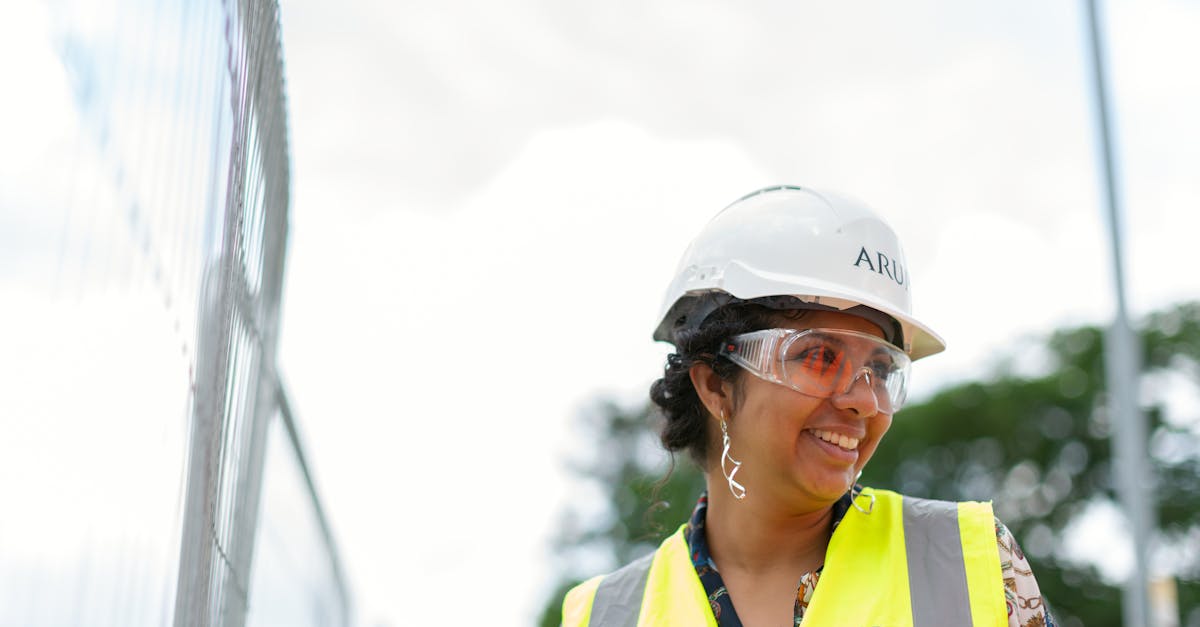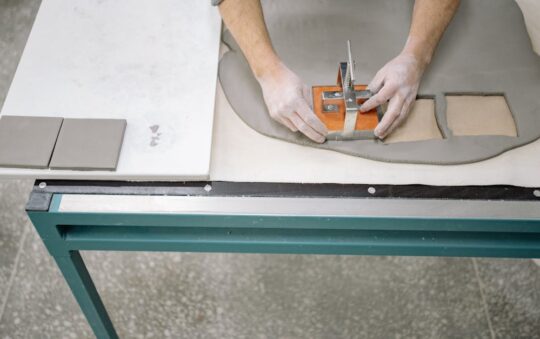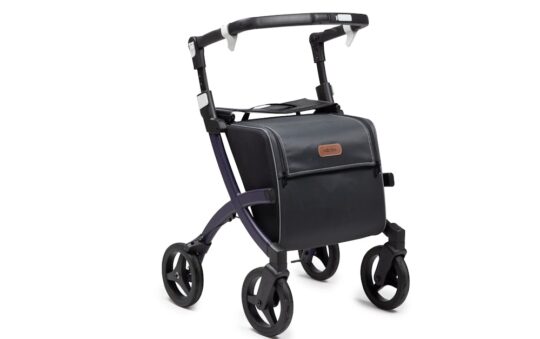Have you ever felt the sting of dust or the sharp snap of a stray twig while working outside? I’ve been there—caught off guard by nature’s little surprises during outdoor projects. That’s why finding the right safety goggles isn’t just about protection; it’s about comfort and clarity that keep me focused from start to finish.
In this text, I’ll share what I’ve learned about the best safety goggles designed specifically for outdoor work. Whether you’re tackling woodworking, gardening, or DIY repairs, the right pair can make all the difference in staying safe and seeing clearly. Let’s jump into options that blend durability, style, and unbeatable protection.
Overview of Safety Goggles for Outdoor Projects
When I think about safety goggles for outdoor projects I picture gear that balances solid protection with all-day comfort. Safety goggles are your first line of defense against flying debris, dust, and UV rays, especially when you’re working on tasks like woodworking, gardening, or fixing things around the house. But not all goggles are made equal. Some fit better, some fog up less, and others handle the tough outdoor conditions without cracking or scratching easily.
Here’s the kicker: the best safety goggles for outdoor use feel like a natural part of your gear instead of a hassle you want to take off five minutes after putting them on. The right pair blocks out hazards while keeping your vision crystal-clear. And since outdoor work often means sweating or moving a lot, features like anti-fog coatings and breathable frames are absolute lifesavers.
On top of that, UV protection is a big deal if you spend a fair chunk of time in the sun. Not every safety goggle includes this, so it’s worth double-checking. I once tried a pair without UV blocking during a summer yard job and ended up with headaches from the glare—a tough lesson learned.
If you’re picking goggles for outdoor projects keep these quick tips in mind:
- Opt for polycarbonate lenses. They’re impact-resistant and lighter than glass.
- Look for adjustable straps and soft seals around the eyes. They help keep dirt out and comfort in.
- Check if the goggles have an anti-fog feature or ventilation channels for airflow.
- UV protection matters if you’re outside during daylight hours.
Factoid you might find handy: according to the U.S. Bureau of Labor Statistics, nearly 70% of eye injuries occur from flying particles. That’s a fairly high number to ignore when choosing your eye protection. Trust me, the right pair of goggles can make your outdoor projects safer and less annoying.
Still, don’t just look for protection alone. Consider style and fit, because goggles you actually like wearing get more use—which means fewer risks. (I once bought a super protective pair that pinched my nose after an hour. Spoiler alert: I ditched them.)
So until the next project calls, keep your eyes covered in comfort and clarity. Your future self will thank you.
Key Features to Consider
Choosing the right safety goggles for outdoor projects isn’t just about picking the coolest-looking pair. It’s about making sure they protect your eyes while fitting comfortably and lasting through tough conditions. Here’s what I focus on when shopping for goggles that can keep up with my weekend projects or pro jobs.
Lens Material and Durability
Honestly, the lens material is a big deal. Polycarbonate lenses are my go-to because they are super tough and resistant to impact. Imagine a flying wood chip or a stray garden stick hitting your eye—these lenses can take those hits without cracking. They’re lighter than glass too, which means less pressure on your nose and ears, so I can wear mine all day without fuss.
One thing to keep in mind: cheaper plastic lenses might scratch easily, which means your vision won’t stay crystal clear. I’d recommend looking for lenses with a scratch-resistant coating — it’s a small extra cost but saves you from scrimping on vision quality later. From my experience, durability means fewer replacements and less hassle, especially when your safety gear faces real wear and tear outdoors.
UV Protection and Anti-Fog Coating
If you spend time outside, UV protection should be non-negotiable. Just like sunscreen protects your skin, UV blocking lenses shield your eyes from harmful rays that can cause strain and long-term damage. When I forgot to pick goggles with UV protection (which, trust me, is easier than it sounds), my eyes felt tired and dry after a few hours under the sun.
Anti-fog coating is another must-have, especially if you’re sweating or moving between shade and sunlight. Nothing’s more annoying than goggles clouding up mid-project. Look for goggles with anti-fog technology — some even have vents combined with coatings to keep your vision sharp. Here’s a quick tip: If your goggles fog up, warm water rinses often clear them temporarily until you can switch to a pair with a reliable anti-fog layer.
Comfort and Fit
Let’s be real. Goggles that pinch or slide off your face become a lifting chore, not protection. One of my biggest lessons was finding goggles with adjustable straps and soft padding around the eyes. These features make the difference between “Wow I barely notice I’m wearing these” and “Ouch, these hurt after 30 minutes.”
I usually go for goggles that offer a close, secure fit without squeezing. Adjustable straps help accommodate different head sizes or if you wear a hat or helmet. Some goggles come with foam linings that improve comfort and seal out dust better, which is a quality worth paying for. If you can, try them on before buying or at least check return policies; a good fit makes a huge difference in keeping those goggles on all day.
Ventilation and Breathability
Here’s the kicker: even the best lenses and comfy fit can’t fight fog if you’re not breathing well inside your goggles. Ventilation slots or indirect vents channel airflow without letting dust enter. This helps keep things cool and prevents excess moisture buildup, which leads to fogging.
When I’m working outdoors, breathability is what keeps me wearing goggles straight through heavy tasks. Poor ventilation makes goggles stick to your skin or feel like a sweaty mask. That’s the last thing you want when you’re busy chopping wood or fixing the fence post. So, pick goggles that mention ventilation — it’s a small detail but one that makes a big difference in daily wear.
Quick takeaway checklist for picking your safety goggles:
- Choose polycarbonate lenses with scratch-resistant coating
- Make sure they block UV rays for outdoor protection
- Look for anti-fog features or coatings
- Prioritize adjustable straps and soft padding for all-day comfort
- Check for vents to improve airflow and reduce fogging
Top Picks for the Best Safety Goggles for Outdoor Projects
Choosing the right safety goggles can feel overwhelming with so many options out there. I’ve narrowed down some of the top choices that combine protection, comfort, and price to fit your outdoor work needs.
Best Overall Safety Goggles
When I want goggles that check every box—durability, comfort, and clear vision—I reach for the Dewalt DPG82-11. These goggles come with polycarbonate lenses that resist scratches and impacts, which means they stand up well to flying debris during wood cutting or yard work. Plus, the anti-fog coating is a real lifesaver on hot days or when moving between shaded and sunny spots outdoors.
The adjustable head strap ensures these won’t slip off, even during active projects, and soft foam padding around the edges keeps dust out without feeling suffocating. I appreciate that they block 99% of UV rays too—because sun protection isn’t just about skin!
If you want an all-around pair that’s tough yet comfortable, this model is a solid bet.
Best Budget Option
Not everyone wants to splash out on premium goggles. For a budget-friendly choice, the 3M Virtua CCS got my attention. These are lightweight and surprisingly well-built for the price. The polycarbonate lenses give decent impact protection, and while the fog resistance is not as strong as higher-end brands, a quick anti-fog spray does the trick for me.
They have indirect venting to enhance airflow without letting particles in, making them suitable for shorter outdoor tasks like gardening or light handiwork. The nose pad can feel a bit tight if you wear glasses, but overall they offer good value—especially if you’re just starting to add protective gear to your toolbox.
Best for Extended Wear
If your project stretches over many hours, comfort becomes king. The Uvex Stealth Safety Goggles stood out when I was working on a long backyard build. Lightweight and designed with soft, flexible frames, these goggles hardly bothered me even after hours of wear.
Their ventilation system is excellent, cutting down fog build-up better than most, which is crucial if you sweat or if humidity rises unexpectedly. Another perk: the lenses have a special coating that resists scratches and chemicals, keeping your view clear through every phase of your project.
For those who hate fiddling with straps or adjusting gear mid-task, these goggles stay put with minimal fuss.
Best for High-Impact Protection
For high-impact projects like demolition or power tool operation, you want goggles that feel rock-solid. The Oakley SI Ballistic M-Frame 3.0 helmets safety goggles deliver heavy-duty protection without looking like you’re preparing for battle.
The lenses exceed military impact standards (MIL-PRF-32432), meaning they can handle serious flying debris. I’ve used these around metal grinding tasks and felt completely secure. They offer a wider field of vision than typical goggles too, which makes working outdoors safer and more comfortable.
What’s great is the adjustable temples and foam gasket sealing out dust, dirt, and grit—a must-have if your outdoor work involves dirt digging or stone cutting.
Quick Takeaway Tips for Picking Your Next Outdoor Safety Goggles
- Look for polycarbonate lenses for strong impact resistance and lightweight comfort.
- Adjustable straps and soft padding can make a world of difference during long projects.
- Anti-fog and ventilation features help keep your view clear regardless of weather.
- UV protection goes beyond sunscreen—your eyes need it too during long outdoor hours.
- Choose expensive goggles when tackling heavy-duty jobs; for light work, budget-friendly models often suffice.
Keep these pointers handy next time you’re browsing—that way you’ll find goggles that feel less like a chore and more like a trusty sidekick for your outdoor adventures.
Performance and User Experience
Choosing the right safety goggles goes beyond just picking a pair that looks sturdy. I’ve found that how they perform day-to-day and feel while wearing them really makes or breaks the experience, especially during those longer outdoor projects where comfort and clear vision come first.
Clarity and Vision Quality
Clear vision is king when you’re outside handling anything from carving wood to trimming hedges. I’ve tested goggles with polycarbonate lenses, and they consistently deliver bright, sharp views without distortion. This material blocks nearly 99% of harmful UV rays, which is a huge plus for anyone spending hours under the sun.
But here’s the kicker — anti-fog coating is a must-have. Without it, lenses fog up quickly, turning your safety gear into a smudged mess. Some models also include ventilation to help air flow, reducing fog naturally. Quick tip: if your daily tasks involve moving between warm and cold spaces, goggles with both anti-fog coating and vents are your best bet for crystal-clear sight.
Comfort During Prolonged Use
Long hours outside can make heavy or tight goggles feel like a headache waiting to happen. From my experience, adjustable straps make a huge difference in achieving a snug yet gentle fit. Think about it—anyone working outdoors wants to focus on tasks, not constantly adjust their gear.
Soft padding around the eyes isn’t just about luxurious feel. It cushions pressure points which can otherwise cause discomfort or even redness after a few hours. When I wore models without that cushioning, it didn’t take long before I was rubbing my eyes or loosening the strap, which defeats the safety purpose. Plus, lightweight frames add to the feel-like-nothing factor—something crucial when your project takes a full day.
Here’s a quick checklist for comfy goggles that made my workday easier:
- Adjustable straps for a personalized fit
- Cushioned foam padding for pressure relief
- Lightweight frames to avoid fatigue
Resistance to Weather Elements
Outdoor projects mean you’re up against sun, wind, dust, and sometimes unexpected rain. I’ve noticed that goggles with sealed edges do a great job keeping dust and debris out. This feature proved especially useful when working in dusty backyards or windy areas—no more squinting or wiping grit away.
Speaking of weather, UV protection should never be an afterthought. I remember switching from generic goggles to ones with built-in UV defense and immediately felt less eye strain and headaches after a sunny afternoon on the job. Also, a scratch-resistant lens coating keeps your goggles looking fresh longer, even after weather bumps or drops.
For those who like to work rain or shine, look for:
- Water-resistant coatings to repel moisture
- Durable build quality that withstands outdoor knocks
- UV-blocking lenses for extended sun exposure
That little extra care in the design keeps your eyes safe while letting you focus on what matters: getting your project done without fuss.
An everyday reminder from me: Safety goggles that wear well, protect fully, and feel like a natural part of your daily gear make all the difference. If your goggles check these boxes, you’ll be reaching for them every time without hesitation.
Advantages of Using Safety Goggles Outdoors
Wearing safety goggles on outdoor projects is a simple step that makes a big difference in protecting your eyes. I’ve found that beyond just shielding against flying debris, good goggles offer several unexpected perks that keep me focused and comfortable as the hours pass.
Protection Against Flying Particles and UV Rays
Outdoor work often means dealing with dust, wood splinters, and other small flying bits that can easily cause eye injuries. Nearly 70% of eye injuries come from such particles, which makes wearing goggles essential. What’s more, many safety goggles come with built-in UV protection. I learned this the hard way when the sun’s glare made my eyes tired and squinty after a long afternoon gardening. UV-blocking goggles helped reduce that strain significantly, keeping my vision sharp and my eyes feeling fresh.
Clear Vision with Anti-Fog Features—No More Sudden Cloudiness
One of the trickiest parts about using goggles outdoors is battling fog, especially when moving between warm and cool environments. Anti-fog coatings or ventilation slots in goggles act like tiny air conditioners for your eyes, preventing that annoying haze from slowing down your work. I recall once working on a woodworking project in the early morning chill and having the lenses fog up so much that I had to stop and wipe them every few minutes. After upgrading to goggles with good ventilation and an anti-fog design, the clarity stayed consistent, making my workflow smoother.
Comfort That Keeps You Going
Comfort might sound like a bonus but it’s a real game-changer (or at least, a day-saver) for those long outdoor sessions. Adjustable straps let me dial in a fit that feels secure but not tight, and soft padding means I don’t have to constantly readjust or worry about pressure points. Lightweight polycarbonate frames also keep fatigue at bay—because no one wants their head feeling like it’s carrying extra baggage. This kind of comfort makes it easier to wear goggles consistently, which, as I’ve learned, is key to keeping your eyes safe throughout the day.
Durability That Can Take a Hit
Outdoor projects are unpredictable. I once dropped my goggles off a ladder, braced for the worst—but thanks to their tough polycarbonate lenses and sturdy frame, they survived with barely a scratch. This durability saves money and hassle in the long run. When choosing goggles, I always look for impact-resistant lenses and scratch-resistant coatings. These features ensure that even if your gear gets knocked around or tossed in a tool bag, it keeps doing its job without clouding your vision.
Quick Tips to Get the Most Out of Your Safety Goggles Outdoors
- Choose polycarbonate lenses for a strong but lightweight shield.
- Look for UV protection, especially if you spend hours under the sun.
- Make sure goggles include anti-fog treatments or ventilation for clear sight.
- Find adjustable straps and cushioned frames for all-day comfort.
- Pick models with sealed edges to keep out dust and dirt.
- Don’t overlook style—if goggles look good, you’re more likely to wear them regularly.
On top of that, wearing proper safety goggles gives peace of mind so you can focus on the task instead of worrying about your eyes. Trust me, once you find a pair that fits just right and offers those protections, it’s like getting an extra set of eyes watching out for you. It really saved me when a sudden breeze kicked up dust during a patio build. Having that shield in place meant I stayed on track without any surprise stings or blurriness.
Potential Drawbacks and Limitations
Even the best safety goggles have their quirks. Here’s what I’ve noticed while testing various models for outdoor projects.
Comfort Can Vary Over Time
Goggles with snug straps and padding are a big win for comfort, but wearing them for hours straight can still cause pressure around the temples or nose. My advice? Take quick breaks when you can to ease any pinching, especially if the goggles feel tight at first. Adjustable straps help, but some models don’t offer enough wiggle room for glasses wearers.
Fogging Issues Still Happen
Many goggles come with anti-fog coatings or ventilation slots, yet I’ve found they don’t always stop fog from creeping in during heavy sweating or sudden temperature shifts. It’s a common issue since moisture from your breath or sweat can build up. For those humid days or winter projects, consider goggles with both vents and treated lenses to reduce fog. A quick wipe with an anti-fog cloth mid-task can also work wonders.
Limited Peripheral Vision
Because safety goggles wrap around your eyes to block debris, they can sometimes reduce side vision compared to standard glasses or open-frame eyewear. I noticed this especially with bulkier models like the Dewalt DPG82-11, which offers solid protection but does narrow your field slightly. Keep this in mind if your outdoor work involves quick movements or spotting hazards from the side.
Price vs. Features Trade-Off
High-end goggles, like the Oakley SI Ballistic M-Frame 3.0, offer top-grade protection but come with a higher price tag. If you’re on a budget, options like the 3M Virtua CCS deliver decent protection but may skip premium coatings or superior comfort features. Balancing cost and needs depends on your workload—light gardening might not justify splurging on military-grade specs.
Bulkiness Can Be a Nuisance
While rugged goggles promise durability, they can feel bulky, making hats or helmets less comfortable when layered. I’ve had days when I had to adjust my gear several times because the goggles bumped against my cap. If you wear other head protection, look for slim-profile goggles or those designed to fit under helmets.
Lens Scratches Happen More Than You Think
Even though some goggles boasting scratch-resistant coatings, lenses still scratch if dropped or wiped with rough cloths. I accidentally set mine down on rough surfaces more than once and regretted not having a hard case. For everyday use, keeping a protective pouch handy is a simple habit that saves you money and frustration.
Quick Tips to Minimize These Drawbacks:
- Adjust straps regularly to avoid tight spots and discomfort.
- Use anti-fog wipes before and during work to keep vision clear.
- Choose goggles with wide lenses or models known for better peripheral views if your work needs it.
- Pick the best protection your budget allows and avoid going too cheap on critical tasks.
- Test goggles with your usual hats or helmets before committing to a pair.
- Store your goggles in a soft pouch or case to prevent scratches between uses.
Each of these factors might seem small in isolation. Still, they add up in daily use, shaping how often you’ll reach for your goggles instead of leaving them in the toolbox. I’ve learned that a little attention to these limits makes a world of difference in comfort and safety.
Comparison with Alternative Eye Protection Options
When you’re picking safety gear for outdoor projects, it’s worth knowing how safety goggles stack up against other common options. Each has its place depending on the job and your level of comfort. Here’s a friendly comparison to help you get the best fit for your needs.
Safety Glasses vs. Safety Goggles
Safety glasses are often the go-to for quick jobs or when you need something lightweight and less intrusive. They look like regular glasses but come with impact-resistant lenses and side shields. But, they don’t seal around your eyes the way goggles do.
That means safety glasses protect against flying debris but might let in dust, wind, or tiny particles from the sides or top—especially outdoors where conditions get a bit wild. In contrast, safety goggles wrap around your eyes, creating a protective barrier against hazards from every angle. If you’re messing with wood chips, soil, or anything that can blow around, goggles tend to do a better job keeping irritants out.
Here’s a quick rundown:
| Feature | Safety Glasses | Safety Goggles |
|---|---|---|
| Protection Level | Good for impact, limited seal | Complete seal, better for dust and sprays |
| Comfort | More lightweight, less bulky | Heavier, but snug fit |
| Fogging Risk | Usually less fog, but varies | Higher fog risk but often with anti-fog coatings |
| Ease of Use | Easy on and off, regular style | May need adjustment, can feel tight |
For me, when I’m just trimming some plants or doing simple repairs, safety glasses do the trick. But when I’m sanding or cutting caution demands goggles without a second thought.
Face Shields vs. Safety Goggles
Face shields are the big, bold option. They provide full-face coverage, which is great if you want to protect more than just your eyes. I’ve used them while grinding metal and dealing with harsh chemicals. Nothing beats the shield for blocking larger chunks or splashes.
Still, face shields don’t always fit snugly around the eyes on their own. They’re meant to be worn with safety goggles or glasses underneath. The shield can also get in your way or get scratched quickly if you’re moving around a lot. That added bulk might not be the most comfortable choice for everyday outdoor tasks like gardening or small woodworking jobs.
Here’s what to consider:
- Face shields are top-tier for heavy-duty protection but can limit airflow leading to fogging and heat buildup.
- Safety goggles offer that tight seal and better breathability without blocking your entire face.
- For casual outdoor projects, goggles hit the sweet spot between protection and comfort.
One thing I learned fast is that pairing safety goggles with a face shield is like wearing gloves and boots on a muddy day—overkill unless the mess demands it. For many outdoor projects, a good pair of goggles alone keeps me safe and moving easy.
Quick Tips for Choosing Eye Protection:
- Pick goggles with adjustable straps for a comfy fit all day.
- If you hate fogging (who doesn’t), look for anti-fog coatings or ventilation features.
- Consider UV protection if you spend hours in the sun—your eyes will thank you.
- Match the protection level to your project: lighter tasks can get by with safety glasses; rougher work calls for goggles or shields.
I tend to keep a pair of safety glasses in my tool bag for everyday light jobs and trusty goggles for anything involving dust, debris, or UV exposure. Trust me, once you find your favorite combo, outdoor work becomes safer and surprisingly more enjoyable.
Tips for Choosing the Right Goggles for Your Needs
Picking out the right safety goggles for outdoor projects can feel a bit overwhelming at first. But after trying several pairs myself, I’ve gathered some handy pointers that make all the difference between struggling with fogged-up lenses and enjoying clear, comfortable protection all day.
Focus on Lens Quality and Protection
First off, I always check for polycarbonate lenses. These are lightweight but tough enough to handle flying debris or accidental drops. Honestly, nothing beats feeling safe knowing those lenses can take a hit without cracking. Also, look for goggles that offer UV protection. Spending hours outside means your eyes need shielding from harmful sun rays. I learned this the hard way—without UV protection my eyes felt strained after long, sunny afternoons.
Comfort Wins Over Style Every Time
Sure, cool-looking goggles are fun but comfort is king. Adjustable straps and soft padding make a huge difference once you’re wearing them for a few hours. I found that goggles with snug yet flexible straps stay put without causing headaches or pinching behind my ears. Plus, padded seals around the eyes stop dust and dirt sneaking in, which is a lifesaver.
Don’t Forget Anti-Fog Features
Fogging can turn your workday into an irritating blur. I recommend goggles with built-in anti-fog coatings or ventilation slots that improve airflow around the lenses. It’s a small detail but can save you from constantly wiping your lenses or losing focus on your tasks.
Match Goggles to Your Project Type
Different outdoor activities call for different levels of protection. For lightweight jobs like gardening or light DIY, budget-friendly goggles with basic impact resistance often do the trick. But if you’re grinding, sanding, or working with power tools, investing in goggles rated for high-impact protection makes all the difference. I keep multiple pairs on hand depending on what I’m tackling—that way I’m always prepared without carrying unnecessary bulk.
Quick Takeaway Tips for Picking Your Next Pair
- Polycarbonate lenses for strong impact resistance
- UV protection to guard your eyes outdoors
- Adjustable straps and soft padding for long-lasting comfort
- Anti-fog coatings or vents to keep vision clear
- Choose protection levels based on your project’s risk
If you’re like me, choosing goggles that fit well and feel good means you’re more likely to actually keep them on—and that’s when protection really works.
Key Takeaways
- Polycarbonate lenses with scratch-resistant coatings provide durable, lightweight, and strong impact protection ideal for outdoor projects.
- UV protection is essential to prevent eye strain and long-term damage during extended sun exposure.
- Anti-fog coatings and ventilation features ensure clear vision by reducing lens fogging in varying weather and activity conditions.
- Adjustable straps and cushioned padding maximize comfort for prolonged wear, encouraging consistent use of safety goggles.
- Choose goggles tailored to your project’s intensity—budget-friendly options suffice for light tasks, while heavy-duty goggles suit high-impact jobs.
- Properly fitting and comfortable safety goggles not only enhance protection but also improve work focus and safety outdoors.
Final Verdict
Choosing the right safety goggles for outdoor projects goes beyond just protection. It’s about finding a pair that fits comfortably, offers clear vision, and stands up to the demands of your specific tasks. When you invest in quality goggles, you’re not only safeguarding your eyes but also making your work more efficient and enjoyable.
Remember that the best goggles are the ones you’ll actually wear consistently. Prioritize features like durable lenses, UV protection, and a secure fit to keep your eyes safe without sacrificing comfort. With the right pair, you can tackle any outdoor project confidently and worry-free.
Frequently Asked Questions
Why are safety goggles important for outdoor work?
Safety goggles protect your eyes from flying particles, UV rays, and debris during outdoor tasks. Nearly 70% of eye injuries result from flying particles, making proper eye protection crucial for safety and comfort.
What features should I look for in safety goggles?
Look for polycarbonate lenses for impact resistance, adjustable straps for comfort, anti-fog coatings for clear vision, and UV protection for outdoor use. Scratch resistance and good ventilation also enhance durability and comfort.
Are polycarbonate lenses better than plastic ones?
Yes, polycarbonate lenses are tougher, lightweight, and more impact resistant than cheap plastic lenses, which scratch easily and offer less protection.
How can I prevent fogging while wearing safety goggles?
Choose goggles with ventilation slots, anti-fog coatings, or use anti-fog wipes regularly. Proper airflow and maintenance help maintain clear vision.
Can I wear safety goggles with hats or helmets?
Some bulkier goggles may interfere with hats or helmets. Look for slimmer designs with adjustable straps to ensure compatibility and comfort.
What are the differences between safety goggles, safety glasses, and face shields?
Safety goggles fully seal around the eyes for better protection, safety glasses are lighter but less protective against dust, and face shields offer full-face coverage but should be worn alongside goggles or glasses.
Which safety goggles are best for heavy-duty outdoor projects?
The Dewalt DPG82-11 is recommended for durability, UV protection, and comfort, while the Oakley SI Ballistic M-Frame 3.0 offers military-grade impact protection for demanding tasks.
Are budget safety goggles worth buying?
Budget goggles like the 3M Virtua CCS provide basic impact protection and comfort suitable for lighter tasks but may lack premium coatings and advanced features.
How do I ensure safety goggles fit well and stay comfortable?
Choose goggles with adjustable straps and soft padding. Regularly adjust the fit and store them properly to maintain comfort and safety.
What should I do if my goggles scratch easily?
Opt for goggles with scratch-resistant coatings and store them in protective cases. Avoid wiping with rough materials to prolong lens life.




